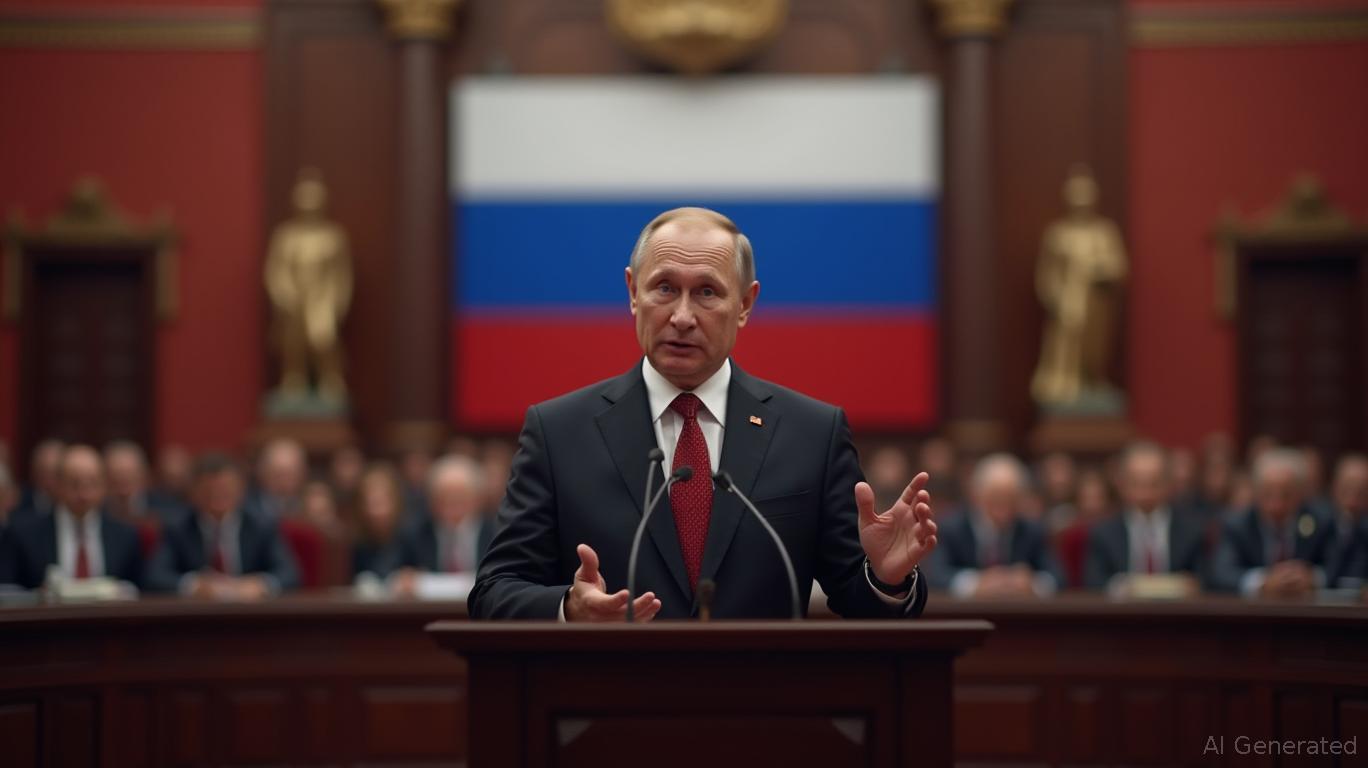Trump’s Tomahawk Conundrum: Support for Ukraine or Risking Further Conflict?
- U.S. Pentagon clears Tomahawk missile supply to Ukraine, removing technical barriers but leaving final approval to President Trump. - Zelenskyy argues 1,000-mile-range missiles would enable strikes on Russian military and energy targets, while Trump cites U.S. defense priorities and escalation risks. - European allies urge action to pressure Putin, but NATO supports Trump's caution due to training requirements and potential U.S.-Russia tensions. - Russia's use of banned 9M729 missiles and U.S. sanctions
The U.S. Department of Defense has approved the possible transfer of long-range Tomahawk missiles to Ukraine, eliminating a significant technical obstacle and placing the ultimate decision with President Donald Trump. As reported by CNN and other media, the Pentagon concluded that sending these missiles would not compromise American reserves or national security, according to a
Zelenskyy has consistently highlighted the tactical value of Tomahawk missiles, asserting that their 1,000-mile range would allow Ukraine to hit targets deep within Russia, including military storage sites, energy facilities, and other vital infrastructure, Forbes reported. He believes such attacks could undermine Russia’s military operations and force Moscow to the negotiating table. Zelenskyy reiterated these points during a recent meeting at the White House with Trump, emphasizing the potential to weaken Russian forces.

Nevertheless, Trump has voiced concerns, saying he is hesitant to allocate weapons away from U.S. defense priorities, a
Although the Pentagon’s approval does not settle these disputes, it now places the spotlight on Trump’s forthcoming decision. European partners, including Finland’s Prime Minister Petteri Orpo, have encouraged the U.S. to move ahead, arguing that arming Ukraine is crucial for increasing pressure on Putin. Meanwhile, NATO Secretary-General Mark Rutte has backed Trump’s measured stance, pointing out that operating the Tomahawk system requires extensive training before it can be used in the field.
This discussion is further complicated by Russia’s deployment of its own banned 9M729 cruise missiles, which have recently been used in attacks on Ukraine, according to a
While Trump weighs his options, the administration has developed backup plans to quickly deliver the missiles if he gives the green light, Newsmax reported. At the same time, the president has ramped up economic sanctions against Russia, targeting major state-run oil companies like Rosneft and Lukoil. These actions, together with the possible military shift, reflect a dual approach of economic pressure and strategic uncertainty.
Trump’s ultimate decision could significantly influence the direction of the Russia-Ukraine conflict and the extent of U.S. involvement. While the Pentagon’s go-ahead removes a practical barrier, the political considerations remain intricate, balancing America’s security needs with the strategic necessity of supporting Ukraine’s defense.
Disclaimer: The content of this article solely reflects the author's opinion and does not represent the platform in any capacity. This article is not intended to serve as a reference for making investment decisions.
You may also like
Fortress Ruble: Russia Closes Crypto Access to Bolster Digital Independence
- Russia's central bank bans domestic crypto payments, prioritizing its digital ruble CBDC launch by 2026 to reinforce financial sovereignty. - Stablecoins are allowed for international trade but prohibited domestically, balancing innovation with central bank control over monetary policy. - The policy aims to prevent crypto-driven financial instability, restrict domestic crypto use to speculation, and align with China's state-controlled CBDC model. - Critics argue the ban stifles innovation, while proponen

Bitcoin News Today: The Cryptocurrency Market Weighs AI Advancements and Trading Optimism Amid Regulatory and Global Political Challenges
- Blazpay (BLAZ) raised $1M in its presale, selling 87% of 157M tokens via audited AI-driven smart contracts and gamified rewards. - Corporate Bitcoin holdings grew: Coinbase added 2,772 BTC ($320M), while MicroStrategy's stash now controls 3% of total supply with $12.9B gains. - U.S.-China trade deal reduced crypto hardware costs by 20%, potentially boosting market growth by 15% in 2026 but triggering $471M ETF outflows post-announcement. - Regulatory scrutiny intensified as Singapore froze $150M in crypt

Trump’s Crypto Clemency: A Bold Move for Progress or a Moral Dilemma?
- Trump's 2025 pardon of Binance CEO CZ sparked debate over crypto ethics and U.S. regulatory leadership amid global competition. - The move faced criticism for alleged conflicts, including CZ's $2B investment in Trump-linked crypto ventures and prior regulatory violations. - Critics called it "pay for play," while supporters argued it boosted crypto innovation, citing a 15% post-pardon investment surge in U.S. firms. - Democrats demanded investigations as political tensions rose, with Trump framing the pa

SUI News Today: Investors Consider Blazpay's Presale Pressure Versus Sui's Volatile Surge
- Blazpay's AI-powered Layer 1 token presale nears 94% completion, raising $1M with 25% price hike imminent. - Sui (SUI) shows bullish technical indicators, targeting $3.00 as it stabilizes above $2.28 amid growing DeFi adoption. - Both projects position as high-growth AI-integrated blockchain alternatives to legacy platforms like Tron and Solana. - Blazpay's $0.0075 presale offers asymmetric upside potential, with $3K investment projecting $80K gains if reaching $0.20 post-listing. - Sui faces $653M token
